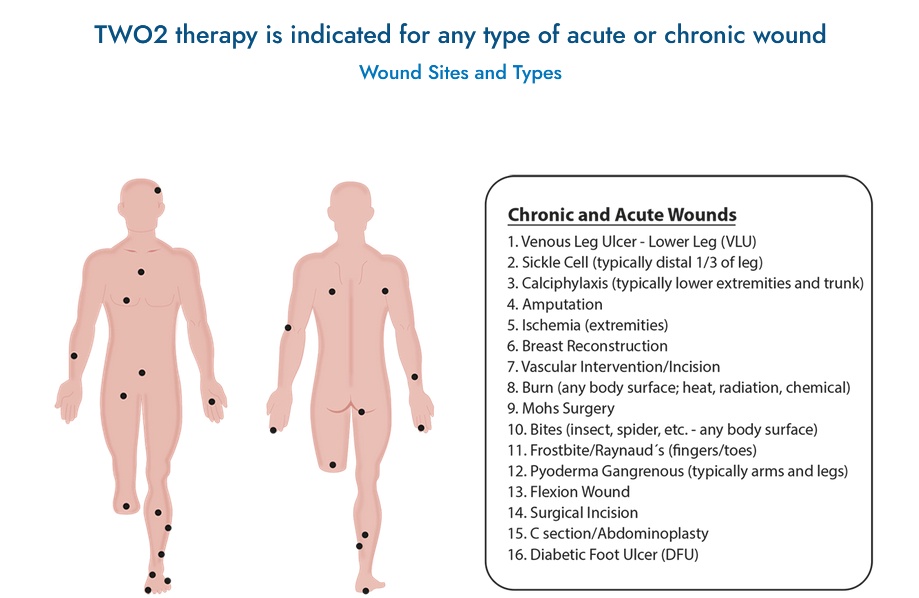Ulcers are a common but misunderstood medical condition that can significantly impact an individual's quality of life. Among the various types of ulcers, venous stasis, venous ulcers, diabetic ulcers, and vascular ulcers stand out due to their distinct causes, symptoms, and treatment approaches.
Venous Stasis Ulcers:
Venous stasis ulcer, or venous leg ulcer, is the most common type, accounting for approximately 70% to 90% of all lower extremity ulcerations. These ulcers typically develop due to chronic venous insufficiency, where damaged or weakened veins fail to efficiently return blood from the legs to the heart, leading to blood pooling in the lower limbs.
Causes: The primary cause of venous stasis ulcers is venous hypertension, which results from impaired venous valves or obstruction in the veins. Factors such as obesity, prolonged standing or sitting, history of deep vein thrombosis (DVT), and older age can contribute to the development of venous insufficiency.
Symptoms: Venous stasis ulcers often manifest as open, shallow wounds on the lower legs or ankles. They may be accompanied by symptoms such as swelling, pain, itching, and skin discoloration, particularly around the affected area.
Treatment: Management of venous stasis ulcers involves addressing the underlying venous insufficiency while promoting wound healing. Treatment may include compression therapy, elevation of the legs, wound debridement, topical wound care, and, in some cases, surgical intervention to repair damaged veins.
Venous Ulcers: A healing and a high likelihood of recurrence
Venous ulcer is a subtype of venous stasis ulcers with similar causes and characteristics. These ulcers typically occur in the lower extremities, particularly around the ankles, and are characterized by poor wound healing and a high likelihood of recurrence.
Causes: Venous ulcers, similar to venous stasis ulcers, primarily result from chronic venous insufficiency. Factors such as obesity, a history of DVT, pregnancy, and prolonged immobility can exacerbate venous insufficiency and increase the risk of ulcer formation.
Symptoms: Venous ulcers' symptoms mirror those of venous stasis ulcers and may include pain, swelling, skin discoloration, and open wounds on the lower legs.
Treatment: Management of venous ulcers focuses on addressing the underlying venous insufficiency and promoting wound healing. Treatment modalities include compression therapy, wound debridement, topical wound care, and lifestyle modifications to improve venous circulation.
Diabetic Ulcers:
Diabetic ulcer, also known as neuropathic or diabetic foot ulcer, is a common complication of diabetes mellitus. These ulcers typically occur on the feet and lower extremities and result from a combination of peripheral neuropathy, poor circulation, and trauma.
Diabetic ulcer is a common complication of diabetes mellitus.
Causes: Diabetic ulcers develop due to peripheral neuropathy, which impairs sensation in the feet, making individuals with diabetes susceptible to unnoticed injuries and trauma. Poor circulation further complicates wound healing, increasing the risk of ulceration and infection.
Symptoms: Diabetic ulcers often present as deep, crater-like wounds on the feet or lower legs. Due to neuropathy, individuals may not experience pain despite the severity of the ulcer. Other symptoms may include redness, swelling, warmth, and drainage from the wound.
Treatment: Management of diabetic ulcers involves a multidisciplinary approach, including wound debridement, offloading pressure from the affected area, controlling blood glucose levels, and addressing underlying vascular issues if present. Advanced wound care modalities, such as growth factor therapy and hyperbaric oxygen therapy, may also be employed to facilitate healing.
Vascular Ulcers:
Vascular ulcer encompasses a broad category of ulcers that result from inadequate blood flow to the affected area, leading to tissue ischemia and necrosis. These ulcers can occur in various locations on the body and are often associated with peripheral arterial disease (PAD) or other vascular disorders.
Causes: Vascular ulcers arise from conditions that impair blood flow, such as PAD, atherosclerosis, vasculitis, or arterial embolism. The lack of oxygen and nutrients in the tissues results in poor wound healing and ulcer formation.
Symptoms: Vascular ulcers typically present as painful, non-healing wounds with well-defined borders. The affected area may exhibit tissue ischemia, such as pallor, coolness, and diminished pulses.
Treatment: Management of vascular ulcers aims to improve blood flow to the affected area and promote wound healing. Treatment modalities may include revascularization procedures, such as angioplasty or bypass surgery, wound care, infection control, and lifestyle modifications.
In conclusion, venous stasis ulcers, venous ulcers, diabetic ulcers, and vascular ulcers are distinct entities with unique causes, symptoms, and treatment approaches. Early recognition and comprehensive management are essential in achieving optimal outcomes and preventing complications associated with these debilitating ulcers. Close collaboration between healthcare providers and patients is paramount in addressing the underlying factors contributing to ulcer formation and promoting effective wound healing.
For more information about Vascular ulcer, switch on Advanced Oxygen Therapy Inc. for the best treatment for diabetic disease or ulcers.


No comments yet